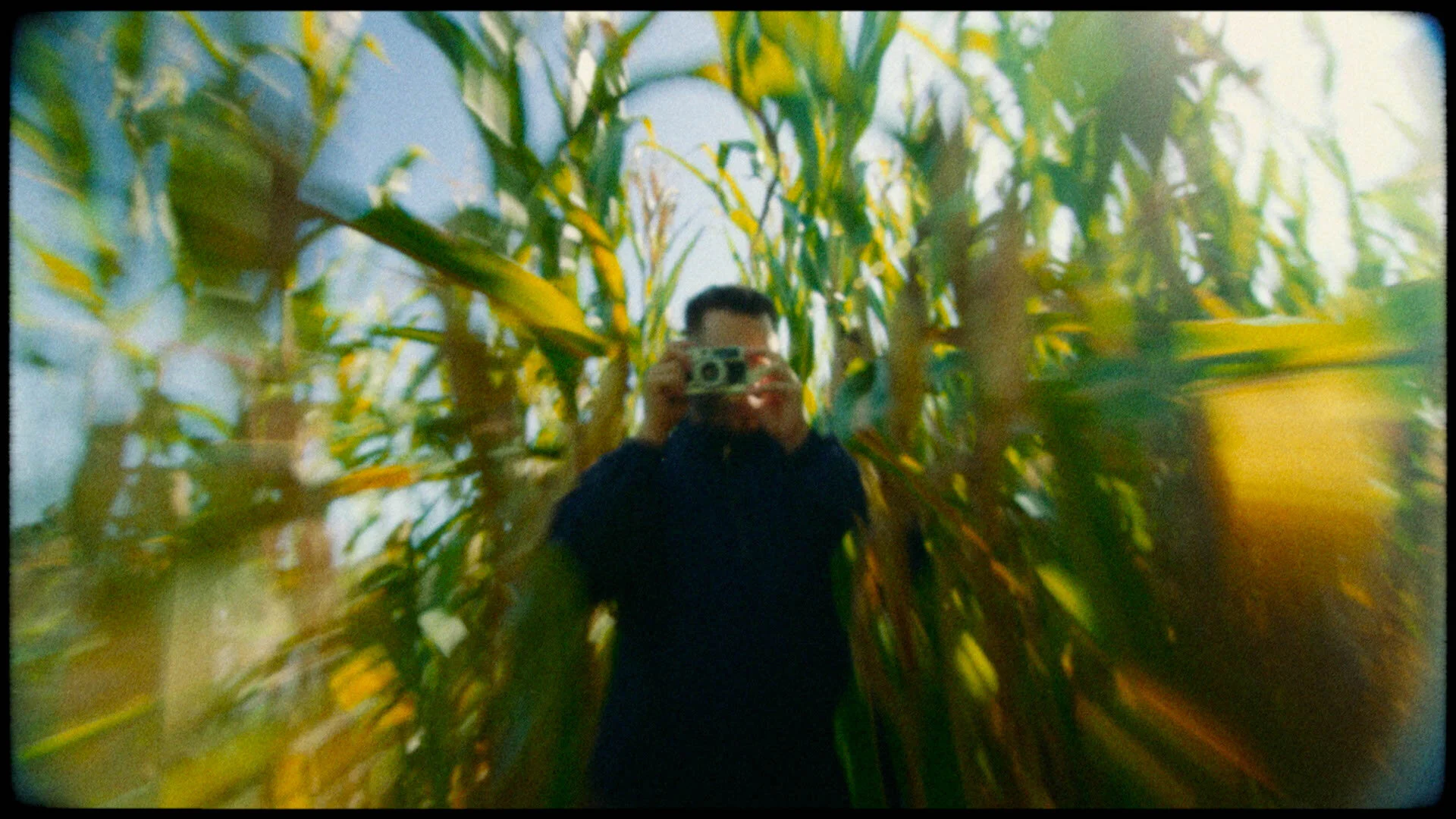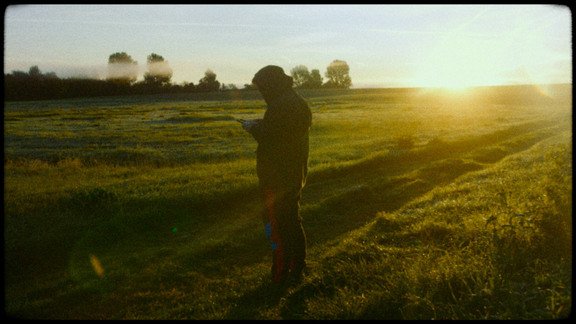Paul
Directed by SEBASTIAN BEYRER
Germany, 2020
Documentary
A window into the colourful world of Director & Photographer, Paul Henschel.
Read our interview with Sebastian below to learn more about the film.
SEBASTIAN BEYRER
Est. Reading Time: 7 Minutes
MARK (M) Tell us a little about yourself - when did you become interested in film and filmmaking?
SEBASTIAN (S) I first became interested in filmmaking when I was around 12 years old. I participated in a workshop with my brother where we spent one week making stop-motion films with Lego characters on mini-sets that we designed and shot. I was instantly hooked on visual storytelling. From 19, I started working for a local television station as a camera operator, then moved into freelancing in my early 20s as a camera assistant, Director of Photography and Director working with small commercial clients in New Zealand. My father was German so I grew up in a bilingual household with regular trips to Europe to visit family. Two years ago, I decided to make the move to Berlin.
On Paul Henschel
M Can you tell us a little about how you met and got to work with Paul? And why were you inspired to share his story?
S I met Paul through Instagram shortly after I moved to Berlin. I really liked his work and we decided to meet up. We shot a couple of projects together, including traveling to Hong Kong to shoot a music video with a German rapper in 2019. During the pandemic when I was mostly locked down with very little work, I was searching for a passion project. I had the idea to create a portrait of someone I was interested in so Paul was a natural character and fit. Paul’s work and how he grew up was very interesting to me, especially from an English-speaking ‘western’ perspective.
M How much time did you spend with Paul and how did it influence your approach to creating the film's visual style?
Y Paul and I were already friends before I made the film. I think this helps when creating a portrait about someone because you already have rapport. A lot of the questions I came up with during the interviews were built from real conversations we had as friends. In total, we spent about four days together shooting the whole piece, over about five months. Paul was an excellent protagonist and being a filmmaker himself, had plenty of suggestions for locations and situations to capture his everyday and professional life.
M I feel like the film's mood and tone reflects Paul’s personality and taste in some ways. So when you’re shooting and editing the film, how deliberate are you in making sure that it captures the essence and spirit of Paul as a person and artist?
Y I think the film’s style was partly influenced by Paul’s own work. I wanted it to reflect a sense of how he works as well. And I chose to grade the project quite richly partly because Paul’s photographs and films are colourful and full of texture.
On Cinematography
M I really love your cinematography - your film has such a rich aesthetic so I would like to briefly get your thoughts on a few elements:
M Can you speak about the aspect ratio - in your eyes, how does it affect the way viewers see Paul and experience the film?
S Even though I didn’t shoot the project on film, I wanted to have a bit of the overscan frame look. It’s not really accurate technically, but I think it feels a bit like looking through a window and kind of makes the whole piece feel a bit less digital.
M And is that why you went for a fairly grainy look?
S Yes, again I wanted to get away from the digital look and try to make it as grungy and grainy as possible. I’m hoping that like me, others feel like this matched the general aesthetic.
M The fisheye shots were such a nice surprise! Why did you include these shots in the film?
S I’m a big fan of shooting wide angle. If I could pick only one lens to use forever, it would be a super wide. I love the distortion of putting wide lenses close to faces and the sense of space that you can create in tight areas with an exaggerated wide perspective. I am a big fan of Terrence Malick’s films, many of which are shot by his long-time Director of Photography collaborator Emmanuel Lubezki on super wide lenses. This fish-eye look in the film was also definitely inspired by gritty stuff like 90s music videos. I like the feel that you’re really getting into the thick of it instead of sitting in a corner with a long lens on a tripod.
On Process & Discovery
M Paul mentions the importance of focusing on the person and relationship rather than the technical elements during his shoots, is it the same for you? Please tell us a little about your approach to interviewing and working with people during filming.
S Honestly, I am more of a cinemtaographer than director. I found myself focusing on the technical aspects a little too much while shooting Paul. It was an exciting challenge for me to try to focus on direction and interviewing while also being aware of making the shots look nice. It took me a while to piece together the story after we shot everything, since a very important part of the film for me was creating something that looked visually beautiful. I don’t think this weighting of strengths is necessarily a bad thing, but my style of direction is very visual first, then I work to build a story around the visuals after I have found my perspective.
M In making and finishing the film, what did you discover and learn that you might adopt or further explore in future projects?
S As with any film project, things always take a lot longer and much more work than you expect at the beginning. I really enjoyed the relatively slow pace of this project. Working on a documentary with no deadline can be bad since their is less motivation to finish, but it also means their is no pressure and it’s something you can keep coming back to when you have the time. For me, I think it was an important lesson in taking my time in interviews and doing more than one as we went, so that I could pick up on things I had missed or details and thoughts I wanted to double-down and deepen with Paul. By our last interview, I knew roughly what I wanted to ask him to give me the material I needed to shoot the final shots of the film. This slow process was really rewarding and made me want to apply it to more of my commercial work.
‘I love the distortion of putting wide lenses close to faces and the sense of space that you can create in tight areas with an exaggerated wide perspective’
— Sebastian Beyrer
On Inspiration
M What are some of the films and who are some of the filmmakers that inspire you, and why?
S As I mentioned before, Terrence Malick’s films are a big inspiration for me. Lots of wide lenses and intimate cinematography. Working on a longer project like this film instead of my shorter commercial or music video work has definitely given me a taste for longer-form work where you sit with characters a little longer and let things play out more without constantly worrying about time and scheduling in your head. It’s a freeing experience when you get the chance to make something without a final plan at the beginning of how it will all turn out.
Days of Heaven (1978) by Terence Malick
A Hidden Life (2019) by Terence Malick
On The Future
M What are you planning to make next?
S At the moment I’ve been quite busy with work as a cinematographer, working on a few music videos and commercial projects here in Germany as well as a few international ones. We are heading into Autumn in Berlin now, I am currently tossing up some more passion project ideas in my head that I would like to shoot in Eastern Europe when it’s a little colder in a few months. No fully-formed ideas yet, but I will hopefully get out of Berlin and go on an adventure soon.
Mark’s Final Thoughts
Really enjoyed Sebastian providing more insight into his film's visual aesthetic - it feels like a balanced reflection of his own style and Paul's style.
Although he's more interested in cinematography, I think it's great that Sebastian directed this film as it will only strengthen his ability to work with directors and actors in the future.
And I think it's cool that he's open to working in more of a free-flowing way, I'm really excited to see his future work.
Tags Cinematography Documentary Experimental Live-action Narration
The founder of Hommage, Mark Shaba published this interview on 10.10.2021 Mark is a filmmaker from Victoria, Australia. He respectfully acknowledges the past and present traditional owners of the land on which he creates, promotes and screens art, the Wurundjeri people of the Kulin nation who are the custodians.
























